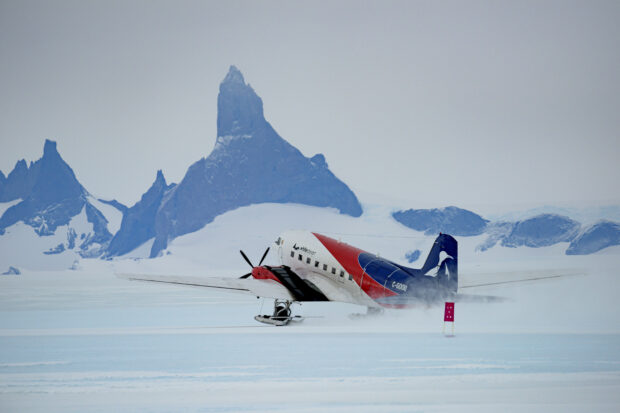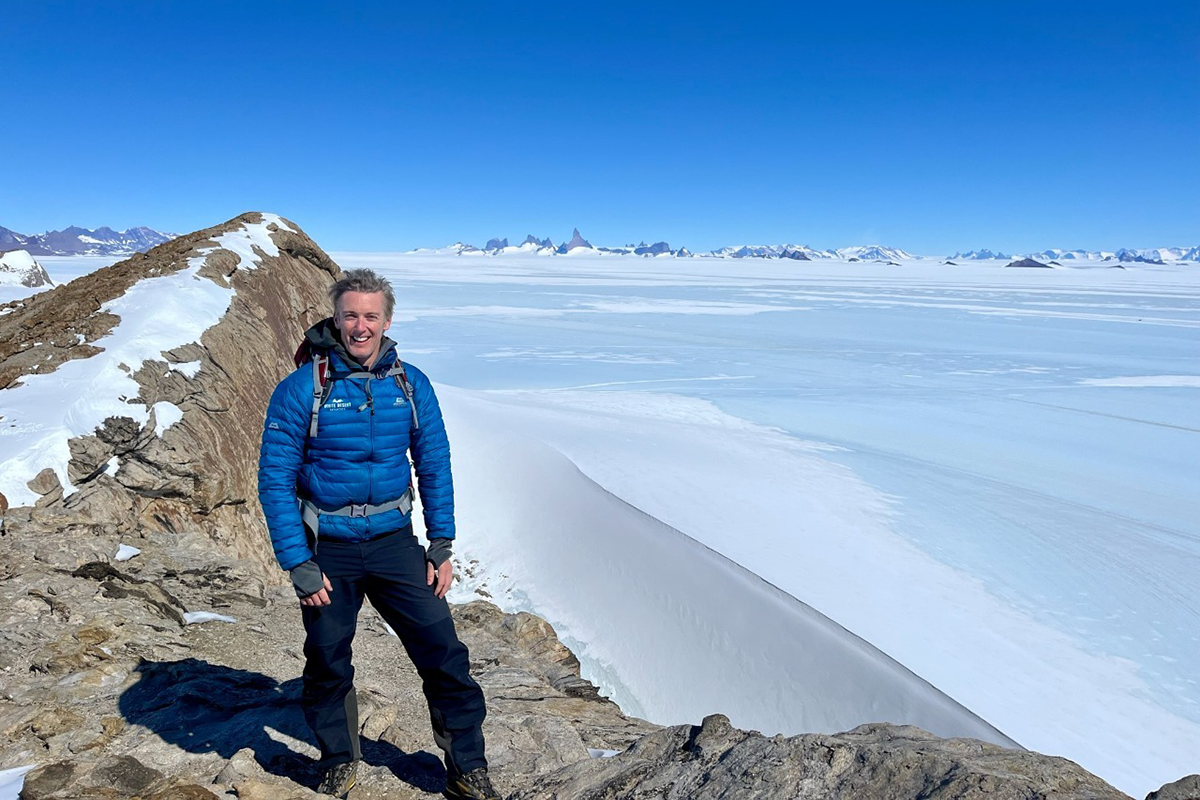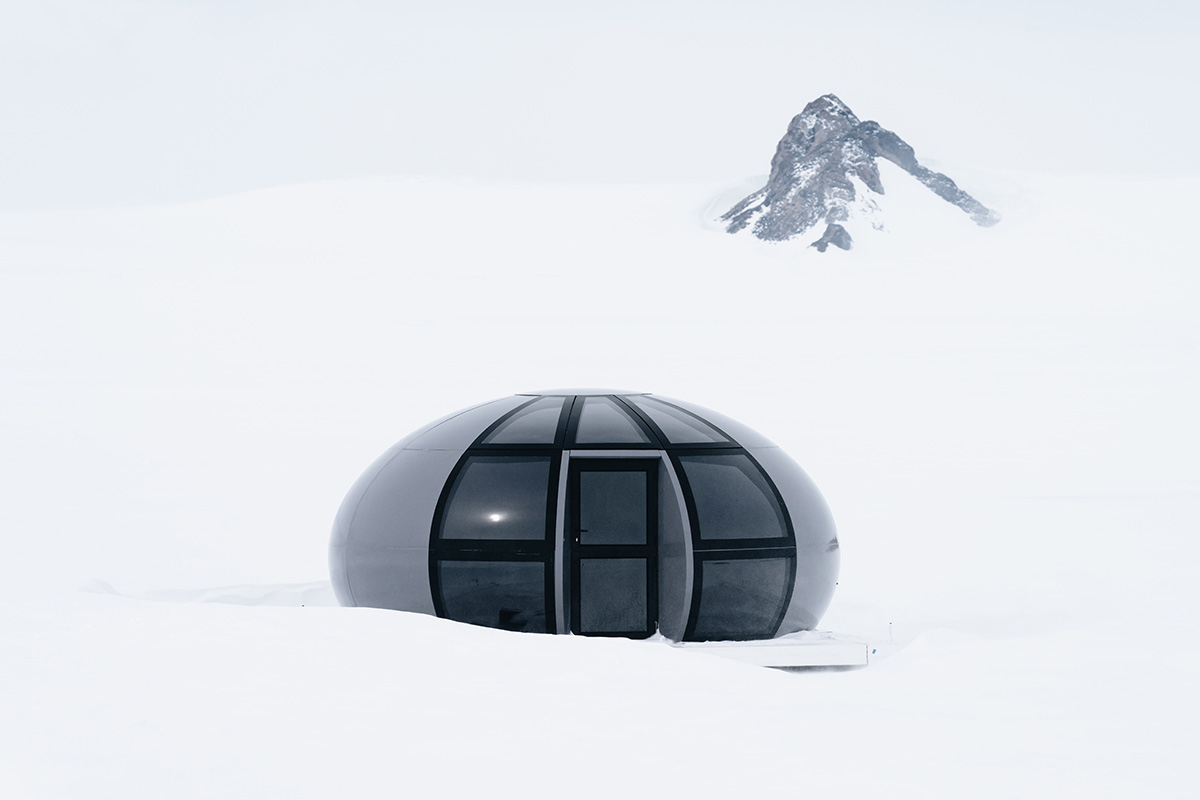Join/
Insiders
White Desert: On the Forefront of Luxury Travel and Sustainability in Antarctica
While on a trip to Antarctica with ultra-luxury tour operator White Desert, American astronaut Buzz Aldrin looked out to the snow-covered mountain and told founder Patrick Woodhead that the continent reminded him of the moon. At this moment, the idea for White Desert’s third and latest camp was born. “I wanted it to look like what they thought the future was going to look like in the 1970s,” says Woodhead, recalling how he used his childhood love of Star Wars and Star Trek to further inspire the design.Once guests make landfall on Antarctica’s interior via private charter plane, they are welcomed into one of Echo’s six domed Sky Pods that evoke the seminal age of Space Exploration. The pods' floor-to-ceiling panoramic windows give way to astonishing views of the lunar-like landscape that captivated Aldrin. However, like everything at White Desert’s camps, they are also designed with function and sustainability in mind. The pods’ curvature enables them to withstand high winds and the gigantic windows save precious energy by heating the room with sunlight. White Desert operates at the intersection of luxury and sustainability, two goals that Woodhead has found can coexist in complete harmony, and often even complement one another. Echo and its sister camps, Wolf’s Fang and Whichaway, are at once beautiful, comfortable and minimally intrusive to the fragile Antarctic ecosystem.Contact Indagare or your Trip Designer to start planning a future trip to Antarctica. Our team of polar travel experts can match you with the right itinerary and activities that are right for you.
A Visionary and Trailblazer Gets His Start


Operating in Antarctica
Many assume that Antarctica is the “Wild West” since it does not have a single governing body. However, Woodhead insists that this is not the case.All operations on the continent are governed by the Antarctic Treaty, a document signed by 56 countries, including the United States. Enacted in 1961, the treaty asserts that no party can claim territorial sovereignty over any part of the continent and that the land can be used for peaceful purposes only. In 1991, the Antarctic Environmental Protocol was created as a complimentary legal document to the treaty that set forth stringent parameters around human activity. Shortly after, tour operators and national governments pooled together their resources to create the International Association of Antarctica Tour Operators, which serves as the overarching regulatory body for tourism on the continent.
The tremendous effort that it takes to make these experiences in the interior possible do not go unnoticed by guests. After her recent stay at Echo, Indagare COO Eliza Harris remarked, “White Desert is a marvel of vision and logistics, like something out of a James Bond film. You can’t believe someone actually made this happen.”
However, Woodhead is very aware of the challenges that lie ahead and keen to innovate.
“We've been doing it for 18 years. We've got much more efficient. We've got much smarter in the way we operate. But still, we get thrown this curveball every now and then. And wow, we learn again, scratch our heads, and then go and redesign stuff. It's kind of fun.”
Right now, White Desert is pioneering the use of renewable energy in Antarctica. All the camps are heated with solar energy and the company is in the process of transitioning to entirely electric vehicles. Eventually, Woodhead hopes to have an entire fleet of vehicles that can be charged with solar power.


Traveling to Untouched Places: The Ethics and Lessons
Antarctica feels otherworldly and encourages travelers to engage with their surroundings in a whole new way. There is no cellphone service, daylight hours evade our common notion of time, and activities are wholly dictated by the weather. Travelers are challenged to abandon their routines and simply be in the moment. “Antarctica can be kind and benevolent and nice to you on sunny and windless days, and you think ‘Oh what’s the big deal down here.’ And the next day you get a hurricane that comes through and you realize just how small and insignificant and exposed you are,” reflects Woodhead. “There’s a very humbling element to this. It drives away egos and gives you your place in the world.”
Published onMarch 23, 2023
Plan Your Trip With Us
We only feature hotels that we can vouch for first-hand. At many of them, Indagare members receive special amenities.
Get In Touch




